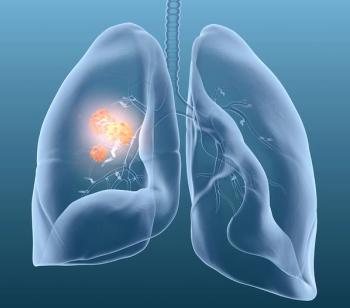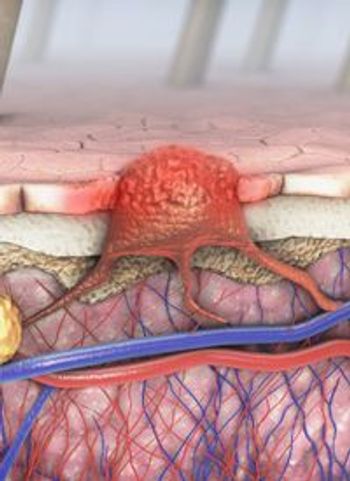
Durable Responses Observed With Pralsetinib in RET Fusion-Positive Cancers
Results from the phase 1/2 ARROW trial showed robust and durable responses in patients with RET fusion–positive cancer treated with pralsetinib.
Pralsetinib (Gavreto) yielded long-lasting, robust responses in patients with RET fusion–positive solid cancers, according to results from the phase 1/2 ARROW trial (NCT03037385), published in Nature Medicine.1
Data from the trial highlighted an response rate (ORR) of 57% (95% CI 35%-77%) and a disease control rate of 83% in 23 patients diagnosed with different solid malignancies. Among those who responded, 13% of patients achieved a confirmed complete response and 43% had a confirmed partial response.
“We’ve had an explosion in clinical next-generation sequencing that allows us to understand shared biomarkers across multiple tumor types, and this study was important to determine if RET fusions are actionable across cancer types,” corresponding author Vivek Subbiah, MD, associate professor at Investigational Cancer Therapeutics, said in a press release.2 “We observed responses regardless of tumor type, prior therapy or gene fusion partner. These data validate RET as a tissue-agnostic target with sensitivity to RET inhibition.”
A total of 587 patients enrolled across all groups, 29 of whom had RET fusion–positive solid tumors but did not include those with NSCLC or thyroid cancer; the 2 subgroups of patients were, however, included in the safety population. A starting dose of pralsetinib was given to 96% of patients at 400 mg once daily, while 4% received a starting dose of 200 mg/100 mg twice daily and then transitioned to 400 mg after 3.4 months. At the time of data cutoff, 14% of patients remained on treatment and 86% had discontinued.
Overall, 23 patients were included in the efficacy population with a median age of 53 years. In total, 61% of patients were female, 87% had metastatic disease, and 87% were treated with previous therapies. The most common cancer diagnoses were pancreatic cancer (17%), cholangiocarcinoma (13%), neuroendocrine cancer (13%), and sarcoma (13%).
Next generation sequencing (NGS) was used to identify the RET fusions in 70% of patients, fluorescence in situ hybridization in 22%, and GeneTrails Solid Tumor Fusion Panel and local NGS in 4% each. Frequently observed RET fusion partners included CCDC6 in 26%, KIF5B in 26%, and NCOA4 in 13%. No KRAS mutations were observed among those with pancreatic cancer.
Tumor shrinkage was seen in 91% of patients and 1 patient progressed based on a new site of disease. The clinical benefit rate was 70%. After a median follow-up of 26.7 months (95% CI, 9.3-26.7), the median duration of response (DOR) was 11.7 months (95% CI, 5.5-19.0). At 6 months, the DOR rate was 69% (95% CI, 44%-94%) and 39% (95% CI, 8%-69%) at 12 months. The DOR for responders at 6 months or more was 69%, 15% had responses lasting 18 months or more, and 8% had responses lasting 24 months or more. The median time to response was 1.9 months and at data cutoff, 31% had ongoing responses.
At a median follow-up of 28.5 months (95% CI, 10.9-28.5), the median progression-free survival (PFS) was 7.4 months (95% CI, 5.1-13.6). At 6 months, the PFS rate was 60% (95% CI, 39%-80%), and was 41% (95% CI, 20%-62%) at 12 months. At a median follow-up of 23.5 months (95% CI, 19.8-23.9), the median overall survival (OS) was 13.6 months (95% CI, 7.5-not reached). At 6 months, the OS rate was 78% (95% CI, 61%-95%) and 54% (95% CI, 33%-75%) at 12 months.
Overall, 72% of patients had treatment-emergent adverse effects (AEs) that were grade 3 or higher. Treatment-related AEs (TRAEs) were observed in 86%, of whom 69% experienced grade 3 or higher toxicities. The most common TRAEs of any grade included aspartate transaminase (38%), increased alanine transaminase (34%), and neutropenia (34%). Two patients had grade 4 AEs including thrombocytopenia and thrombocytopenia, pancytopenia, and acute kidney injury. One patient died from an unknown cause but was recorded as related to treatment as the cause could not be unequivocally excluded.
Transient dose interruptions were necessary in 59% of patients because of TRAEs and 45% had permanent dose reductions because of TRAEs, the most common of which were neutropenia (28%), anemia (10%), increased aspartate transaminase (10%), thrombocytopenia (7%), and increased alanine transaminase (7%).
References
- Subbiah V, Cassier PA, Siena S, et al. Pan-cancer efficacy of pralsetinib in patients with RET fusion-positive solid tumors from the phase 1/2 ARROW trial. Nat Med. Published Online August 12, 2022. doi:10.1038/s41591-022-01931-y
- Pralsetinib achieves tissue-agnostic benefits for patients with RET gene fusions. News Release. MD Anderson Cancer Center. August 12, 2022. Accessed August 16, 2022. https://bit.ly/3Cdz6ym
Newsletter
Stay up to date on recent advances in the multidisciplinary approach to cancer.
































































































